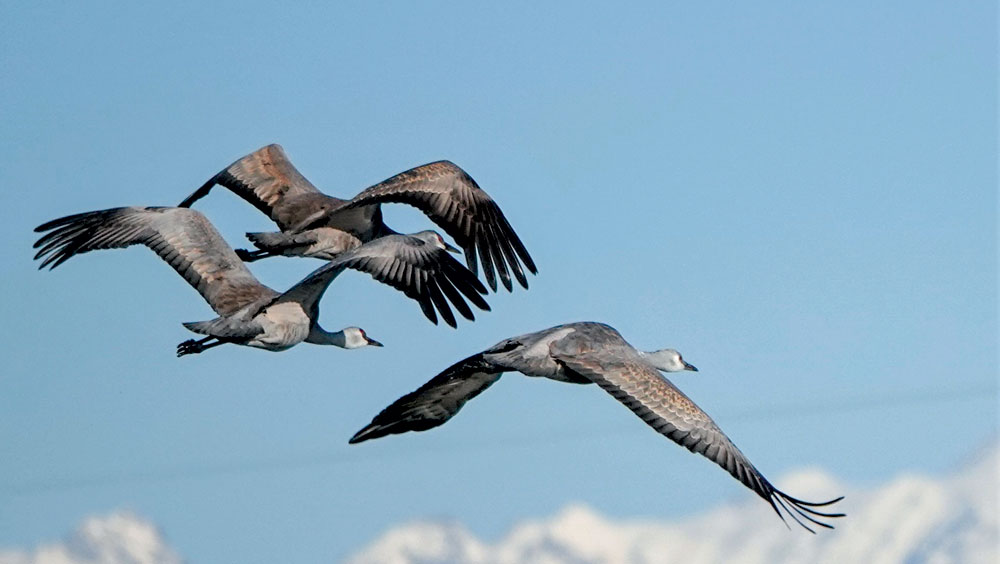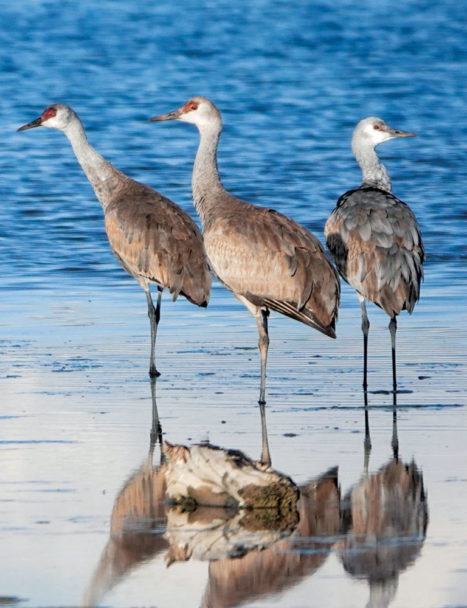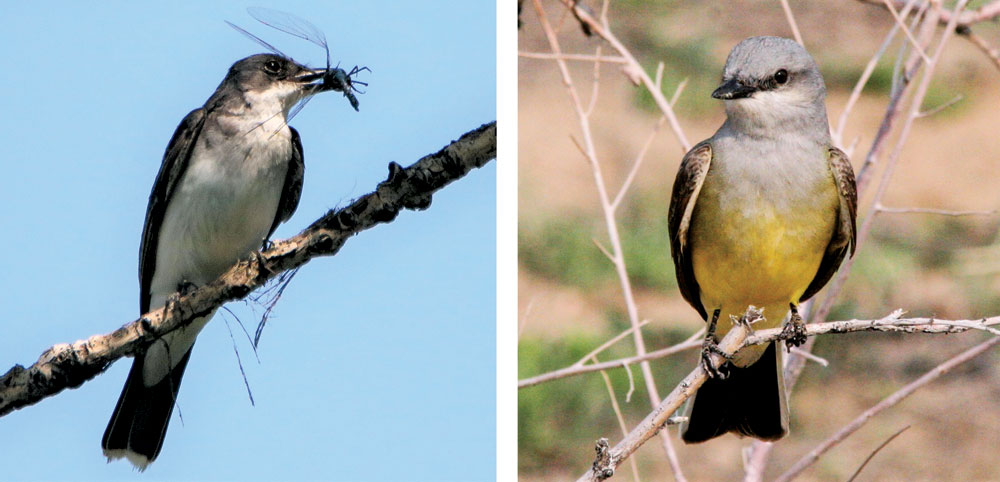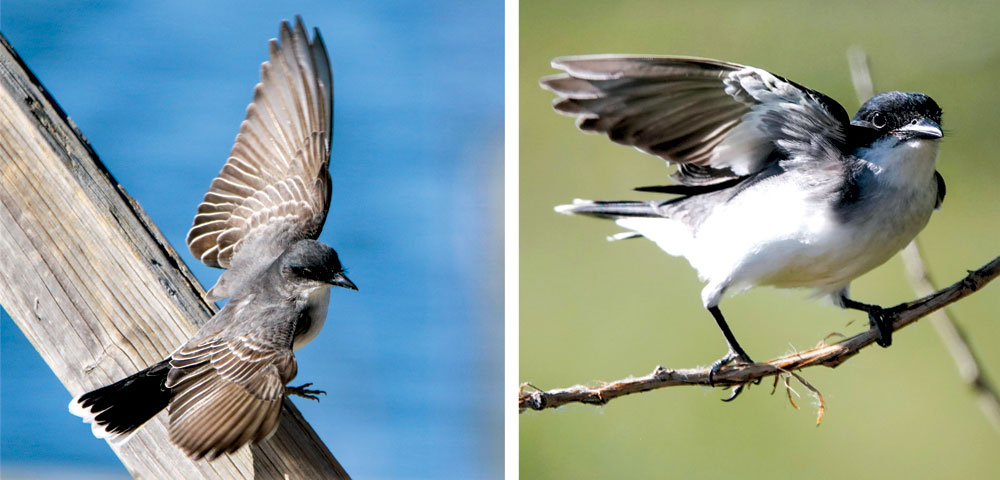
Flying Sandhill Cranes: Length: 47.2 inches. Weight: 119.9-172.8 ounces. Wingspan: 78.7 inches

Cranes stop over at Lake Ladora of the Rocky Mountain Arsenal National Wildlife Refuge during northward Spring migration.
Sandhill Cranes
Sandhill Cranes are large, tall, gray birds with broad wings and long legs. The bulky body tapers into a very long but slender neck. The head is relatively small and the straight bill is longer than its head. The neck and legs are fully extended during flight. The crown is red in the adult and rusty brown in juvenile birds.
They are best known for their exuberant courtship dance where they leap in the air with wings spread while calling out. Their spring gathering of over a quarter of a million birds on the Platte River in Nebraska is one of the greatest wildlife spectacles on the continental United States. It is common in Denver to hear their loud and rolling calls, which direct our gaze up to witness flocks of flying cranes during Spring and Fall migrations.

Left: The Eastern Kingbird, seen here with a dragonfly in its beak, is dark gray on its head, back, and wings, and white on its throat, breast, and belly. The tail has a squared tip that is white. Eastern Kingbird: Length: 7.5–9.1 inches. Weight: 1.2–1.9 ounces. Wingspan: 13–15 inches. Right: The Western Kingbird is yellow and light gray. It has a pale gray head and a whitish gray chin and throat that blends into a bright lemon-yellow belly. The wings are quite dark and the tail is black with conspicuous white outer feathers. Length: 7.9–9.4 inches. Weight: 1.3–1.6 ounces. Wingspan: 15–16.1 inches.
Eastern & Western Kingbirds
Both Western and Eastern Kingbirds are warm weather visitors in the United States. We see both in the summer months in Denver where they also breed. They are insectivores belonging to a large group of birds called flycatchers. Both like to forage by watching from a perch and then flying out to snap up insects in mid-air. They also hover and then drop to the ground to catch the insects or feed on berries. The Eastern Kingbirds winter in South American forests and their diet changes to fruits and berries predominately, while the Western Kingbirds migrate south into Mexico and Central America, including Southern Florida.

Two more examples of the Eastern Kingbird.



0 Comments